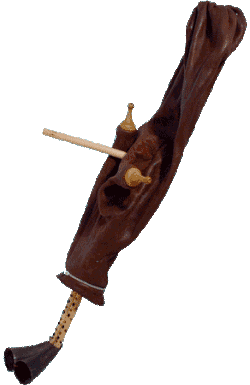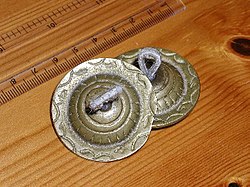This article needs additional citations for verification .(November 2025) |
Arabic musical instruments can be broadly classified into three categories: string instruments (chordophones), wind instruments (aerophones), and percussion instruments. They evolved from ancient civilizations in the region.
Contents
- Chordophones
- Plucked lutes
- Zithers
- Bowed lutes
- Lyres
- Aerophones
- Flutes
- Reed instruments
- Trumpets
- Percussion instruments
- Drums and frame drums
- Other percussion
- References






